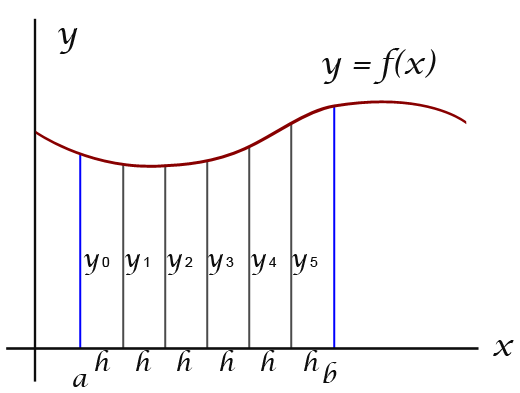Simpson's Rule
Before attempting this reading it would be a good idea to learn the trapezium rule here, because I won’t go so much into details about the logic behind. I will concentrate more on how to use the rule rather than how it works. Thomas Simpson (20 August 1710 – 14 May 1761) was a British mathematician, inventor and eponym of Simpson’s rule to approximate definite integrals.
Suppose we wanted to find the area under the graph of y = f(x) between x = a and x = b The graph for the problem is shown below.

We would usually integrate to find out the area for this so the area would be;

There might come a situation when we can’t integrate the function in this case we do an approximation. The Simpson’s rule is very logical. The following diagram shows a graph followed by the Simpson’s rule.
…where h is the width of each strip and n is the even number
The more strips involved or you have in the rule the better the approximation.
Example
Use the Simpson’s rule with 8 strips to calculate an approximation to the following integral:

First we need to work out the width of each strip to use for h in the Simpon’s rule. We know that the region we want to find the area for runs from x=-1 to x=3, so the total width is a 4. That must mean that the width of each strip is 4/8=0.5 So we now need to work out the y values at each point. A good way of finding these values is by drawing a table as below.
For example: when x = -1

This is how we find the x values.
| -1 | -0.5 | 0 | 0.5 | 1 | 1.5 | 2 | 2.5 | 3 |
| -1 | -0.5 | 0 | 0.5 | 1 | 1.5 | 2 | 2.5 | 3 |
So we now since we know the y values at each x point we can move on to using the Simpson’s rule as the following;



And the answer for the area between the specified points is 6.80
This is how you use the Simpson’s rule. It’s that simple!


thanks i have understood & realised its the same as newton’s rapson formular
please check on the formular its wrongly stated help & change it because its misleading
good and simple example. But 3.25 was not written under radical .